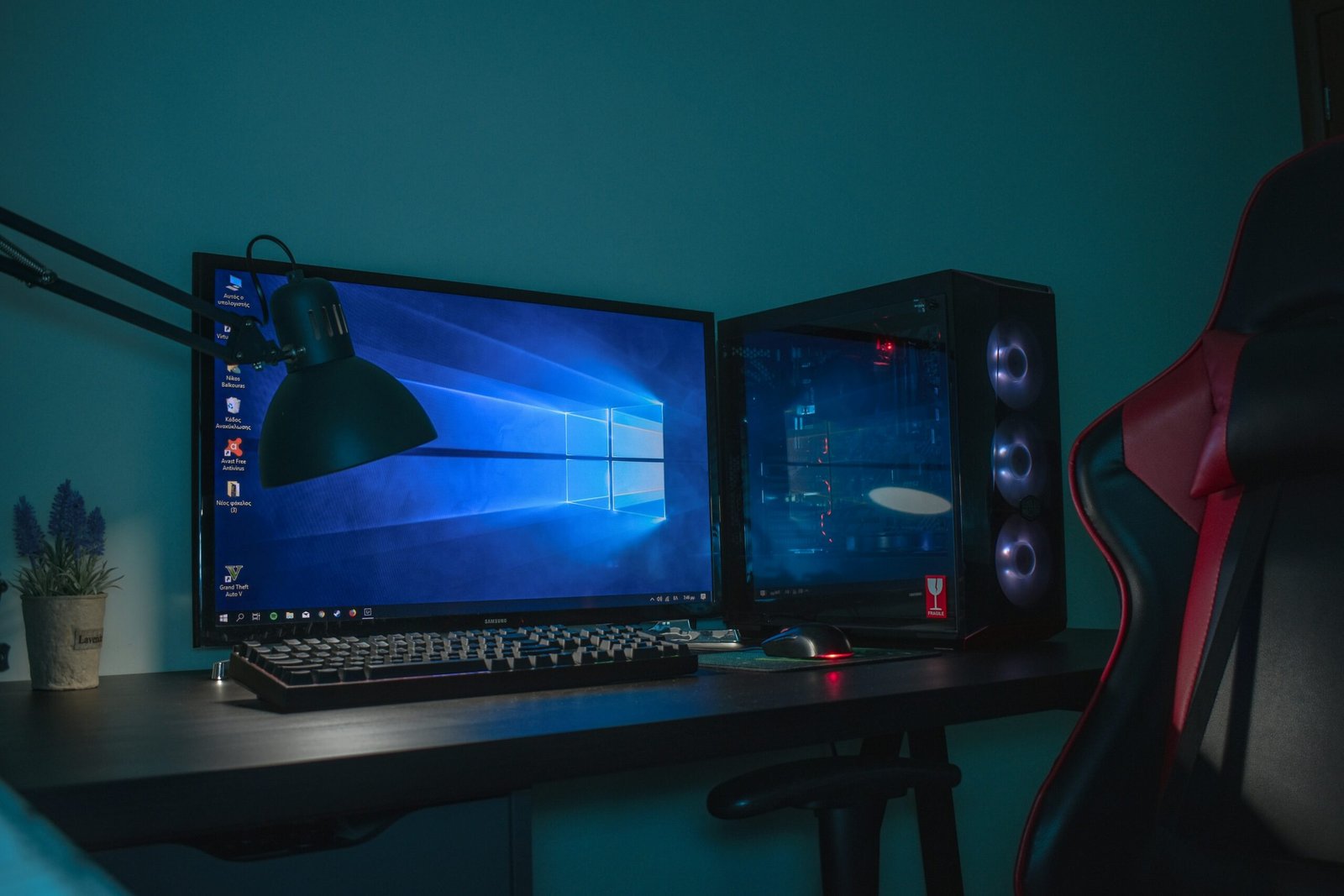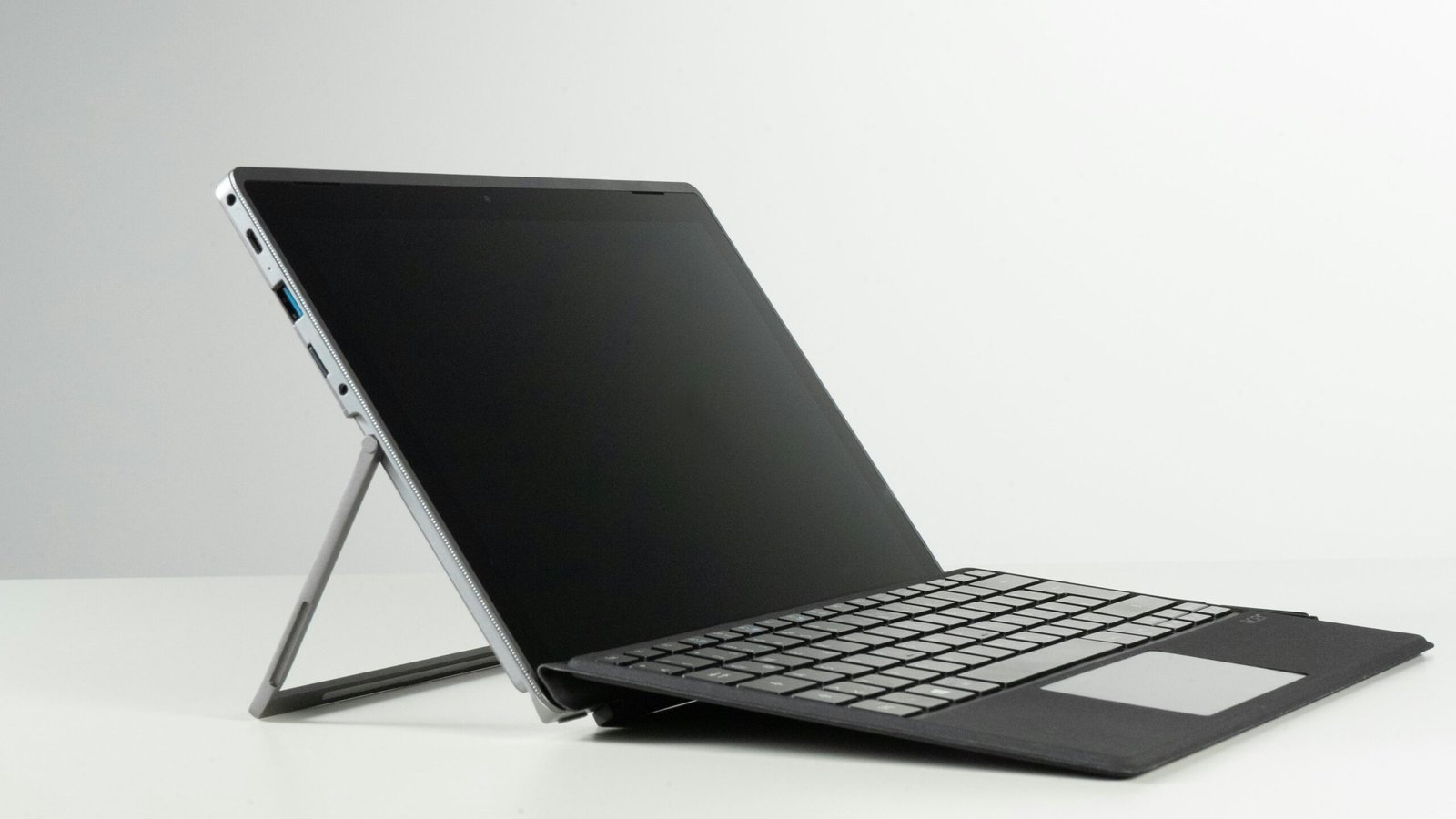Introduction to Future-proof PC Building
As technology continues to evolve at an unprecedented pace, building a future-proof PC becomes essential for users who want to keep their system relevant beyond its initial purchase. Anticipating the requirements of both current and upcoming software is pivotal in selecting the right components for your build. By making informed choices, you can ensure that your desktop PC remains efficient and capable, even as demands increase over time.
The importance of future-proofing lies in its ability to prolong the lifespan of your computer. As software becomes more sophisticated, requiring greater processing power and enhanced graphics capabilities, the components you choose must be resilient enough to accommodate these advancements. This involves selecting a robust CPU, an adaptable GPU from brands like AMD, and adequate RAM, all of which should be designed with future needs in mind. A well-rounded selection ensures that your PC can run demanding applications, both present and future, without necessitating frequent upgrades.
When considering a build for 2025, it is also important to keep an eye on emerging technologies such as artificial intelligence integration, advances in gaming graphics, and the transition to new computing paradigms, including cloud computing. Understanding these trends allows builders to cultivate a system that is not only capable today but also prepared for the innovations of tomorrow. Additionally, optimizing for factors like energy efficiency and compatibility with upcoming hardware standards can greatly enhance your computer’s longevity.
In conclusion, building a computer that can withstand the test of time requires a thoughtful approach centered around the right components that prioritize both current performance and future adaptability. By focusing on future-proofing, you can ensure that your $1000 PC remains performant and useful well into the next decade.
Choosing the Right CPU
- AMD Ryzen R7-7700
- Simplistic Design: Enjoy the latest generation of Windows 11 Home for your everyday needs. *MSI recommends Windows 11 Pr…
- Beyond Fast: The NVIDIA GeForce RTX 4060 powered by the Ada architecture unleashes the full glory of ray tracing, which …
When constructing a $1000 computer for 2025, selecting the right CPU is critical to achieving optimal performance for both gaming and productivity tasks. The central processing unit (CPU) serves as the brain of the desktop, influencing processing speed and overall efficiency. As we advance towards 2025, the landscape of processors continues to evolve, yielding new technologies that enhance multi-core performance and energy efficiency.
One of the primary factors to consider when choosing a CPU is the number of cores and threads. In recent years, processors have shifted towards higher core counts, catering to users who demand multitasking capabilities and enhanced performance during heavy workloads or when running multiple applications simultaneously. Models like AMD’s Ryzen series are expected to remain prominent due to their excellent performance across a variety of tasks, offering a favorable balance of price and processing power.
In addition to core count, performance metrics such as clock speed and cache size play significant roles in overall CPU performance. Multi-core performance will be key in 2025, allowing users to leverage parallel processing for tasks ranging from video rendering to gaming. For gamers specifically, AMD’s processors have earned a reputation for exceptional performance without breaking the bank, making them a solid choice for a budget build.
Energy efficiency is another critical consideration in today’s increasingly environmentally conscious society. With advancements in manufacturing processes, AMD has been able to produce chips that not only deliver high performance but also consume less power, thereby reducing heat output and overall energy consumption. This dual emphasis on performance and efficiency will ensure that users can reliability power their desktop systems without excessive energy costs.
Given the rapidly evolving technology landscape, staying informed about emerging CPU models and their capabilities is essential. As you build your $1000 PC, prioritize processors that offer a blend of high multi-core performance and energy efficiency, ensuring your system remains capable and competitive in the years ahead.
Selecting an Optimal GPU
When building a high-performance desktop for gaming and graphic-intensive tasks, selecting the right Graphics Processing Unit (GPU) is crucial. As we look towards 2025, advancements in GPU technology will enhance gaming experiences, visual fidelity, and overall system performance. Understanding these developments will aid PC builders in making informed decisions within a budget of $1,000.
The landscape of GPUs is constantly evolving, with companies like AMD leading the charge in offering powerful options. Currently, AMD’s Radeon series boasts impressive specifications that cater to various gaming needs, balancing power with affordability. By 2025, we can expect further improvements in architecture, enhanced ray tracing capabilities, and optimizations in power consumption, thereby offering better performance per watt.
When considering specific models, the AMD Radeon RX 6000 series will likely still present competitive options in value and performance. As new models are introduced, potential choices could include future iterations of this series or even entries into mid-tier offerings from competitors. It’s important to consider not just raw performance, but also features such as VR support and support for higher frame rates, as the gaming landscape continues to evolve with new titles demanding more from desktop systems.
Additionally, while a robust GPU is necessary, ensuring compatibility with other components of your PC build is essential. This includes confirming that your AMD GPU choice fits well with your motherboard, power supply, and cooling system. Keeping future gaming requirements in mind will assist you in selecting a graphics card that can sustain its performance for several years.
In conclusion, selecting the optimal GPU when building a $1,000 desktop in 2025 will involve staying informed on the latest technologies and anticipating future needs. This strategic approach will ensure that your computer remains relevant and powerful in the years ahead.
Memory (RAM) Requirements for 2025
As we look ahead to 2025, the role of Random Access Memory (RAM) in a PC build becomes increasingly critical. With advancements in software and gaming technologies, the demand for higher memory capacities and speeds will undoubtedly rise. For users planning to build a computer in this era, careful consideration of RAM specifications is essential for optimal performance.
The transition from DDR4 to DDR5 memory illustrates the technological evolution anticipated by 2025. DDR5 offers superior bandwidth and efficiency compared to its predecessor, making it the recommended choice for new PC builds. Systems equipped with DDR5 RAM will provide enhanced speeds, thereby improving multitasking capabilities and overall responsiveness when running intensive applications, whether they are productivity tools or advanced gaming environments.
When it comes to capacity, a minimum of 16GB of RAM will likely be necessary to meet the demands of emerging software and gaming titles. For users who engage in more demanding multitasking or professional workloads, 32GB is recommended. This amount will ensure that the desktop can manage multiple applications smoothly, as well as support memory-heavy processes without lag.
Furthermore, users should pay attention to RAM speed, generally measured in megahertz (MHz). For optimal performance, targeting speeds of at least 3200MHz for DDR4 or 4800MHz for DDR5 should be a priority. The increased speed helps in reducing latency and improving data transfer rates, which can significantly impact the performance of a computer, especially a gaming PC or one used for content creation.
In summary, selecting the right RAM is crucial for upcoming PC builds in 2025. By opting for DDR5 over DDR4, ensuring at least 16GB of capacity, and aiming for higher speeds, users will position their systems to handle the increasing demands of the next generation of applications and gaming. This thoughtful approach will greatly enhance the functionality and longevity of the new desktop system.
Storage Solutions: SSD vs. HDD
When building a $1000 PC for 2025, selecting the appropriate storage solution is crucial for optimizing performance and ensuring efficiency in everyday computing tasks. In this regard, the two primary storage types to consider are Solid State Drives (SSDs) and Hard Disk Drives (HDDs). While HDDs have been the standard storage option for many years, SSDs have quickly gained popularity due to their superior speed and reliability.
At their core, SSDs utilize flash memory to store data, resulting in much faster read and write speeds compared to traditional HDDs, which rely on spinning disks to access information. This performance enhancement can significantly improve the overall experience when using a desktop computer powered by an AMD processor or any other modern CPU. For gamers and professionals whose workloads demand fast access times, opting for an SSD can lead to shorter load times in applications and games, ultimately enhancing productivity and enjoyment.
As of 2023, the prices of SSDs have become more competitive, making them an attractive choice for budget-conscious PC builders. NVMe (Non-Volatile Memory Express) technology further elevates the performance of SSDs by allowing them to connect directly to the motherboard, thus eliminating the bottlenecks associated with older connection types. When evaluating your storage solution, consider the balance between speed and capacity. SSDs typically offer lower storage capacities for similar price points compared to HDDs; however, for many users, the speed of an SSD outweighs the need for larger storage. For a typical $1000 PC build aimed at 2025, a combination of both an SSD for the operating system and a larger-capacity HDD for additional storage could be a wise strategy, ensuring a smooth experience without compromising on necessary space.
Motherboard Compatibility and Features
When embarking on the journey of building a $1000 PC for 2025, selecting the right motherboard is paramount. The motherboard acts as the backbone of your computer, providing the necessary connections and compatibility for all components. One of the primary considerations when choosing a motherboard is the chipset compatibility, which determines the compatibility with CPUs, including AMD and Intel options. For building a future-proof PC, opting for motherboards that feature the latest chipsets will allow you to harness the full power of future processors as they are released.
In addition to chipset compatibility, connectivity options are crucial for ensuring that your desktop PC can effectively communicate with peripherals. Modern motherboards typically come equipped with various ports such as USB-C, USB 3.2, HDMI, and DisplayPort, catering to different types of devices. Moreover, it is important to choose a motherboard that offers multiple PCIe slots, allowing for the addition of graphics cards or other expansion cards as needed. For instance, if you are an avid gamer or require high-performance computing for content creation, consider a motherboard with PCIe 4.0 support, which provides higher bandwidth for graphics cards.
Another essential aspect of motherboard selection is future-proofing features. Features such as support for high-speed RAM, M.2 slots for NVMe SSDs, and robust power delivery systems will enhance the longevity and performance of your PC build. Furthermore, built-in Wi-Fi and Bluetooth functionalities can add convenience without the need for extra components. Therefore, when selecting a motherboard for your desktop, prioritize compatibility with your current build along with the foresight for potential upgrades in the future.
Power Supply: Calculating Wattage and Efficiency
When building a desktop computer, one of the essential components to consider is the power supply unit (PSU). Selecting an efficient PSU not only ensures the stable operation of your pc but also contributes to its overall performance and longevity. The wattage of the power supply must be carefully calculated based on the selected components, as this will directly impact your system’s reliability and readiness for future upgrades.
To determine the required wattage for your build, begin by adding up the power requirements of each individual component—including the CPU, GPU, motherboard, RAM, and any additional peripherals. Each component has a specific wattage requirement which can usually be found in the manufacturer specifications. It is recommended to allow for some headroom in your calculations, typically around 20-30% more than the sum of your components’ requirements. This extra capacity helps accommodate future upgrades and ensures the PSU operates efficiently without being overworked.
An important aspect to consider while selecting your desktop’s PSU is its efficiency rating. Many power supplies come with an 80 PLUS certification, which indicates their efficiency at different load levels. A PSU with an 80 PLUS certification will not only save energy but also minimize wasted heat, promoting a cooler operating environment for your computer. Such a power supply typically operates at over 80% efficiency, resulting in lower electricity bills and a reduced carbon footprint.
In addition to efficiency, reliability is a critical factor when selecting a power supply. Opt for units from reputable brands that offer warranties and have positive reviews. Good quality PSUs often include features like modular cables, which can simplify cable management and improve airflow within your build. By carefully considering wattage and efficiency, you can ensure your AMD computer setup has a robust and reliable power source that will support its performance over time.
Cooling Solutions: Keeping Your Build Quiet and Efficient
When constructing a desktop PC, effective cooling solutions are essential to ensure optimal performance and longevity of the components. With the continuous evolution of technology, both air and liquid cooling systems have emerged as viable options for managing thermal output from high-performance parts, particularly when using cutting-edge processors from manufacturers like AMD. Understanding the distinctions and benefits of these options is crucial for building a quiet and efficient computer.
Air cooling, the traditional method utilized in countless setups, employs heat sinks and fans to dissipate heat away from key components such as the CPU and GPU. With advancements in fan technology and materials, modern air coolers offer impressive thermal management while operating with minimal noise. Models like the Noctua NH-D15 or be quiet! Dark Rock Pro 4 are renowned for their exceptional cooling performance and whisper-quiet operation, making them ideal choices for users who prioritize noise reduction alongside efficiency.
On the other hand, liquid cooling systems have gained popularity due to their ability to maintain lower temperatures under heavy loads, thus enhancing overall performance. A closed-loop liquid cooler, like the Corsair H100i or the NZXT Kraken series, can effectively transfer heat away from critical components. These solutions are particularly advantageous for gamers or content creators using AMD processors capable of high overclocks, as they provide superior cooling capacity with less noise compared to traditional air solutions. They are also visually appealing, often featuring RGB lighting and sleek designs that can complement a high-end PC build.
Overall, the choice between air and liquid cooling depends on individual needs, preferences, and budget. Adequate thermal management not only ensures the reliability of a desktop computer but also enhances the user experience by minimizing distracting noise levels. As you build your system, consider investing in quality cooling solutions that will keep your AMD-powered PC running smoothly and quietly for years to come.
Assembling the Components and Final Thoughts
Assembling your own desktop PC can be a rewarding venture, especially when you are aware of the necessary steps to facilitate a smooth and successful build. Having gathered all the components for your $1000 build, it is important to first prepare your workspace to promote organization and efficiency. A clean, static-free surface with good lighting is conducive to the assembly process. Gather essential tools such as a screwdriver, thermal paste, and zip ties to help manage your cables effectively.
Begin by installing the CPU onto the motherboard. Handle the CPU by its edges and align the notches correctly. Once seated, secure it with the retention arm. Next, apply thermal paste and attach the CPU cooler, which helps maintain optimal temperatures for your AMD processor. Following that, position your RAM modules in the designated slots, ensuring they are securely in place by applying even pressure until you hear a click.
With the motherboard prepared, proceed to fit it into the PC case. Make certain to install standoffs to prevent any potential short circuits. Once the motherboard is secured, the power supply should be installed for easy access to all components. Then, connect power cables to the motherboard and other components such as the GPU. Finally, install storage drives, like SSDs or HDDs, ensuring they are correctly configured for optimal performance.
After ensuring everything is properly connected, power on your computer to test its functionality. If all components are functioning correctly, you can move forward with installing your operating system and necessary software. Building a desktop PC not only provides you with a custom-built machine tailored to your specific needs but also imparts a sense of accomplishment for having tackled the challenges of this process. As you conclude your assembly, remember that the journey to constructing your own PC was educational and has equipped you with skills valuable in any computer-related endeavors.






